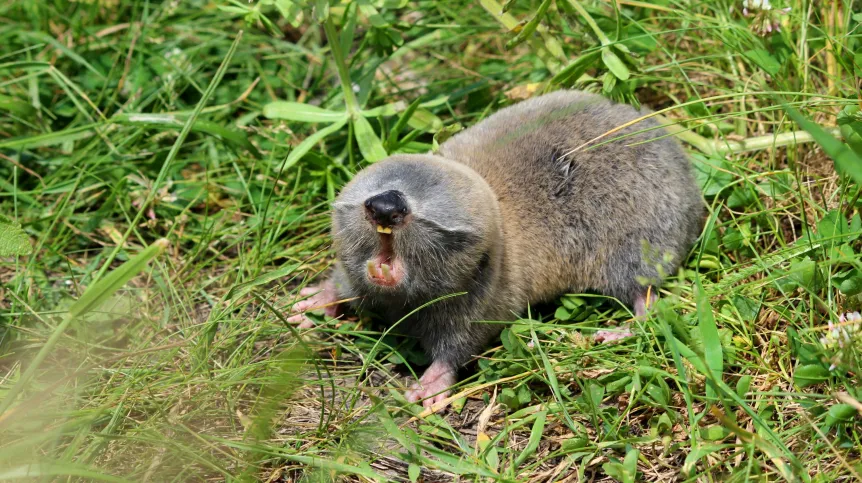
Does the endangered sandy blind mole-rat (Spalax arenarius) still exist? The chances are slim. Due to the destruction of the Kakhovka dam on the Dnieper, almost the entire range of this endemic species has been flooded, biologist Robert Maślak reports on social media.
According to Maślak from the Faculty of Biology at the University of Wrocław, the small geographical range of the species, limited to the Kherson region, and its specific ecological needs - steppe, sandy areas, overgrown mainly with absinth-grass or absinth-spurge, make it very vulnerable to such disasters.
The biologist presents a general map of the range of this species and a map with sites from 2015-2021, and compared them with a flood map. 'As you can see, only small areas at the southern ends of the range and the Kinburn Peninsula at the mouth of the Dnieper to the Black Sea remain outside the flooded area. There are sites there, but these are areas of intense fighting - mole-rats live underground, but they are sensitive to sounds and vibrations,’ he says.
Mole-rats are a group of rodents that use their front teeth to dig tunnels in the ground. ’Unlike moles, which lead an underground lifestyle and belong to insectivores (not rodents), mole-rats eat plant food, mainly roots, tubers, bulbs of various species,’ Maślak explains.
The tunnels dug by mole-rats can be more than 200 m long and run shallowly underground, only the breeding chambers can be more than 3 m deep.
According to Maślak, the species’ biology is poorly understood - the sandy blind mole-rat female gives birth to 1-4 young once a year. In the Middle East, in South-Eastern Europe and Asia, there are 8 species of mole-rats, including two - the sandy blind mole-rat and the more numerous and having a wider range Podolsk blind mole-rat (Spalax zemni) - found only in Ukraine. The nearest sandy blind mole-rat sites are about 30 km from the Polish border at the height of Zamość. Everywhere, they are threatened by the development of agriculture and afforestation of fallow lands.
Compared to other rodents, sandy blind mole-rats have a very long lifespan, of over 20 years. They are completely resistant to cancer - preliminary studies have shown that their immunity results from the secretion of large amounts of interferon beta when cancer cells appear. (PAP)
bar/ kap/
tr. RL













